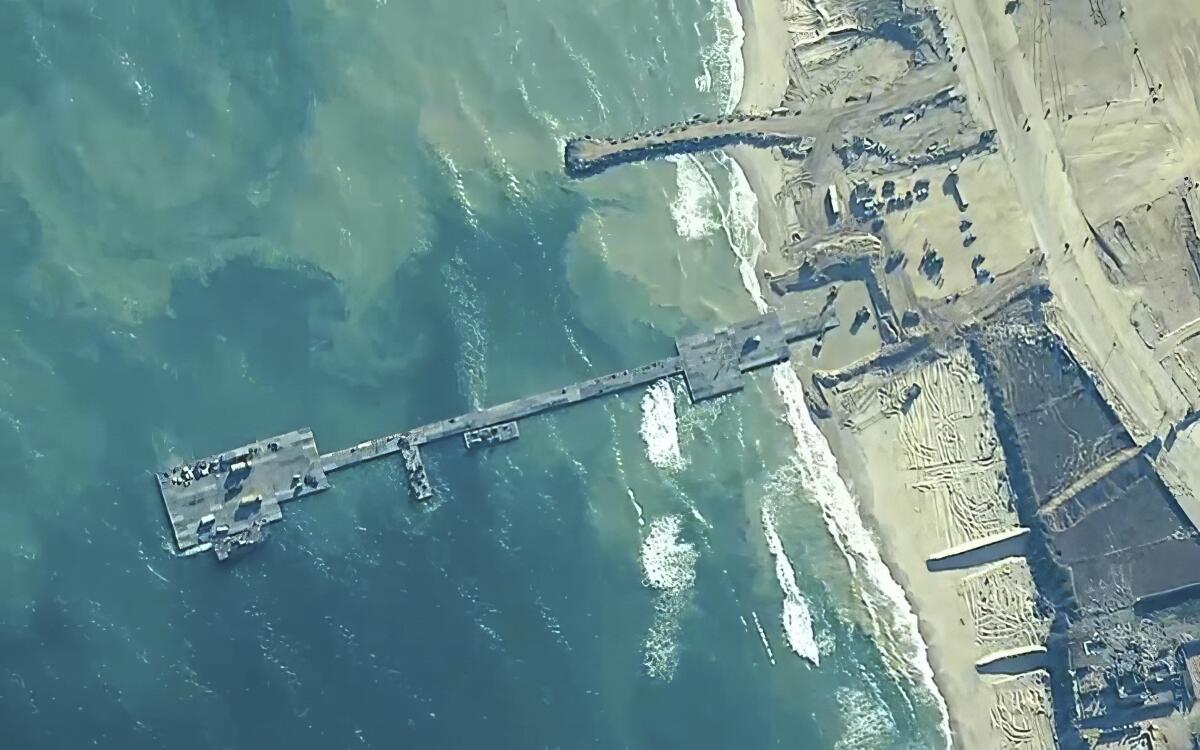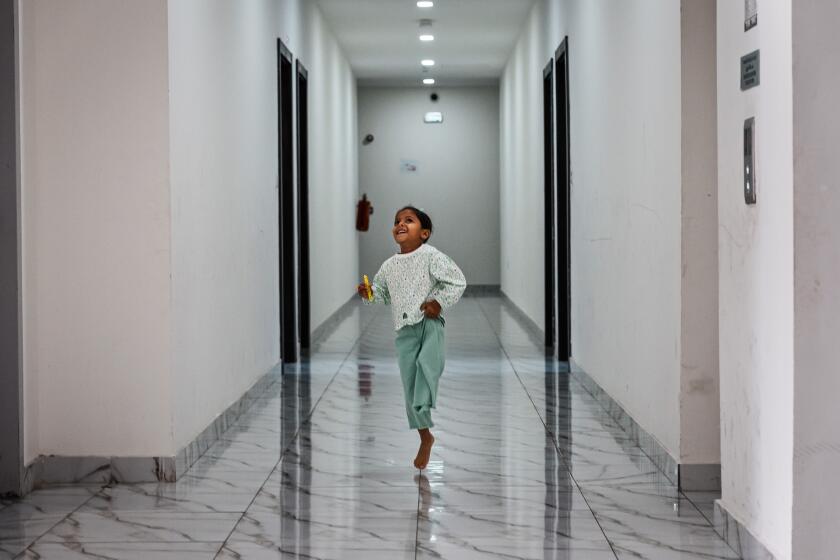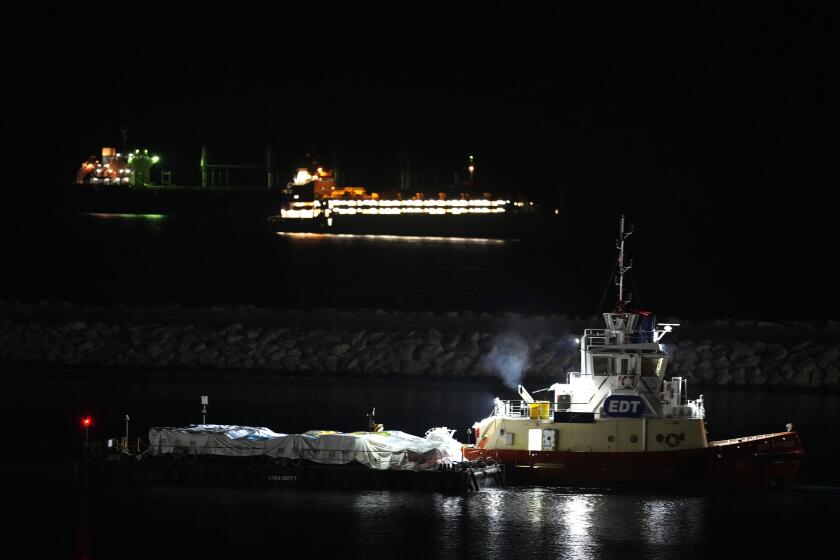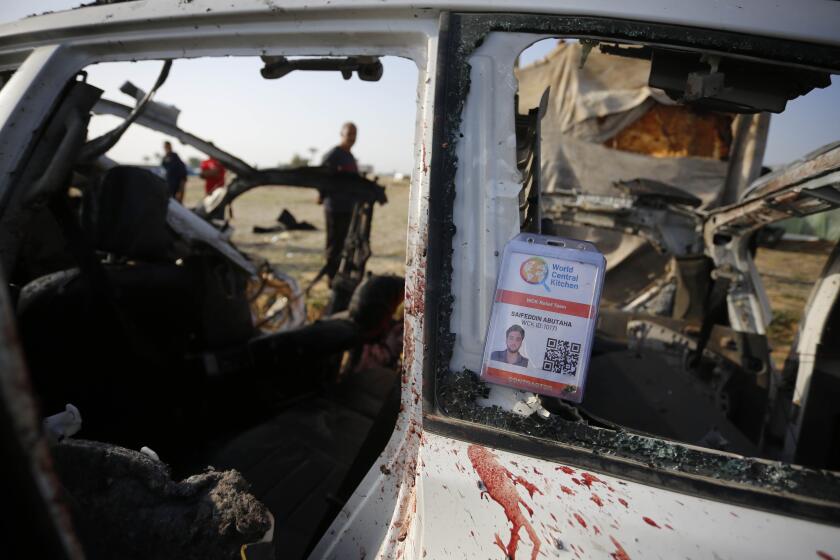Trucks are rolling across a new U.S. pier into Gaza. But aid challenges remain

WASHINGTON â Trucks carrying badly needed aid for the Gaza Strip rolled across a newly built U.S. pier and into the besieged enclave for the first time Friday as Israeli restrictions on border crossings and heavy fighting hindered the delivery of food and other supplies.
The shipment is the first in an operation that American military officials anticipate could scale up to 150 truckloads a day, all while Israel presses in on the packed southern city of Rafah in its push against the Hamas militant group.
At the White House, National Security Council spokesman John F. Kirby said âmore than 300 palletsâ of aid were in the initial delivery and handed over to the United Nations. Kirby said the U.S. had indications that âsome of that aid was already moving into Gaza.â
But the U.S. and aid groups warn that the floating pier project is not a substitute for land deliveries that could bring in all the food, water and fuel needed in Gaza. Before the Israel-Hamas war began seven months ago, more than 500 truckloads entered the territory on an average day.
The operationâs success also remains tenuous because of the risk of militant attack, logistical hurdles and a growing shortage of fuel for the trucks to run due to the Israeli blockade of Gaza since Hamasâ Oct. 7 attack. Militants killed 1,200 people and took 250 others hostage in that assault on southern Israel. The Israeli offensive since has killed more than 35,000 Palestinians in Gaza, local health officials say, while hundreds more have been killed in the West Bank.
Israel-Hamas war: In Qatarâs capital, a compound housing Palestinian medical evacuees from Gaza is a living catalog of what war does to the human body.
Aid agencies say they are running out of food in southern Gaza and fuel is dwindling, while the U.S. Agency for International Development and the U.N. World Food Program say famine has already taken hold in Gazaâs north.
Troops finished installing the floating pier on Thursday, and the U.S. militaryâs Central Command said the first aid crossed into Gaza at 9 a.m. Friday. It said no American troops went ashore in the operation.
The Pentagon said no backups were expected in the distribution process. The U.S. plan is for the U.N. to take charge of the aid once it leaves the pier. The World Food Program will then turn it over to aid groups for delivery.
Aid distribution had not yet begun as of Friday afternoon, said a U.N. official who spoke on condition of anonymity because of the sensitivity of the matter.
With too little humanitarian aid reaching Gaza over land, the United States is leading an effort to build a floating pier that will allow deliveries by sea.
The U.N. aid coordinating agency said the start of the operation was welcome but not a replacement for deliveries by land.
âI think everyone in the operation has said it: Any and all aid into Gaza is welcome by any route,â Jens Laerke, spokesperson for the Office for the Coordination of Humanitarian Affairs, told journalists in Geneva on Friday. Getting aid to people in Gaza âcannot and should not depend on a floating dock far from where needs are most acute.â
The U.N. earlier said fuel deliveries brought through land routes have all but stopped. âIt doesnât matter how the aid comes, whether itâs by sea or whether by land. Without fuel, aid wonât get to the people,â U.N. deputy spokesperson Farhan Haq said.
Pentagon spokesperson Sabrina Singh said the issue of fuel deliveries comes up in all U.S. conversations with the Israelis. She also said the plan is to begin slowly with the sea route and ramp up the truck deliveries over time as any kinks in the system are worked out.
Israel fears Hamas will use fuel for military purposes, but it asserts that it places no limits on the entry of humanitarian aid and blames the U.N. for delays in distributing goods entering Gaza. Under pressure from the U.S., Israel has opened a pair of crossings to deliver aid into the territoryâs hard-hit north in recent weeks.
It has said that a series of Hamas attacks on the main crossing, Kerem Shalom, have disrupted the flow of goods. The U.N. says fighting, Israeli fire and chaotic security conditions have hindered delivery. Violent protests by Israelis have also disrupted aid shipments.
Israel recently seized the key border crossing at Rafah, a city on the Egyptian border, raising fears about civiliansâ safety while also cutting off the main entry for aid into the Gaza Strip.
President Biden ordered the pier project, expected to cost $320 million. The boatloads of aid will be deposited at a port facility built by the Israelis just southwest of Gaza City and then distributed by aid groups.
U.S. officials said the initial shipment totaled as much as 500 tons of aid. The U.S. has closely coordinated with Israel on how to protect the ships and personnel working on the beach.
But there are still questions about the safety of aid workers who distribute the food, said Sonali Korde, assistant to the administrator of USAIDâs Bureau for Humanitarian Assistance, which is helping with logistics.
âThere is a very insecure operating environment,â and aid groups are still struggling to get clearance for their planned movements in Gaza, Korde said.
That concern was highlighted last month when an Israeli strike killed seven relief workers from World Central Kitchen whose trip had been coordinated with Israeli officials. The group had also brought aid in by sea.
Staffers from World Central Kitchen, chef JosĂŠ AndrĂŠsâ humanitarian aid group trying to get food to Palestinians in Gaza, were killed in Israeli airstrikes.
Pentagon officials have made it clear that security conditions will be monitored closely and could prompt a shutdown of the maritime route, even if just temporarily. Navy Vice Adm. Brad Cooper, a deputy commander at the Central Command, told reporters Thursday that âwe are confident in the ability of this security arrangement to protect those involved.â
The site was targeted by mortar fire during construction, and Hamas has threatened to target any foreign forces who âoccupyâ the Gaza Strip.
Biden has made it clear that there will be no U.S. forces on the ground in Gaza, so third-country contractors will drive the trucks onto the shore.
Israeli forces are in charge of security on shore, but there are also two U.S. Navy warships nearby that can protect American troops and others.
The aid for the sea route is collected and inspected in Cyprus, then loaded onto ships and taken about 200 miles to the floating pier. There, the pallets are transferred onto trucks that then drive onto the Army boats, which will shuttle the trucks from the pier to a floating causeway anchored to the beach. Once the trucks drop off the aid, they return to the boats.
Associated Press writer Baldor reported from Washington, Gambrell from Dubai. AP writers Jamey Keaten in Geneva and Julia Frankel in Jerusalem contributed to this report.
More to Read
Sign up for Essential California
The most important California stories and recommendations in your inbox every morning.
You may occasionally receive promotional content from the Los Angeles Times.













